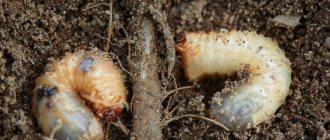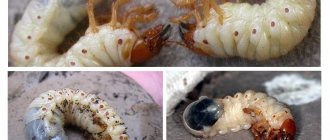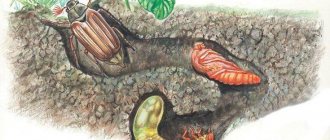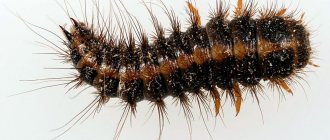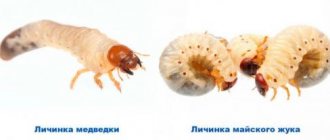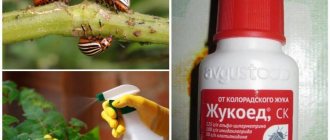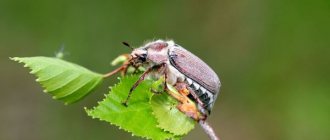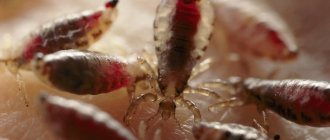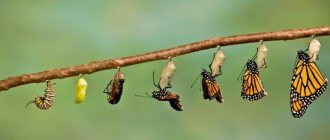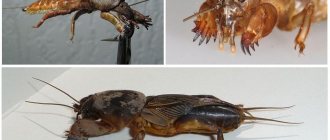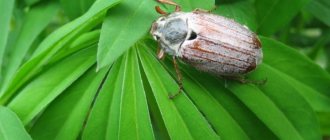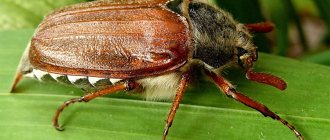On the globe, insects occupy a leading place, both in species and in numbers. They can be found in various places on our planet. Even in our time, there are species that have not been fully studied by scientists. You can often meet the most interesting representatives of the insect class.
One such representative is the rhinoceros beetle, although this name also applies to other beetles that have a horn. Scientists know about the Hercules beetle and the elephant beetle. Therefore, we can say that the rhinoceros beetle belongs to a similar family.
Rhinoceros beetles. Maintenance at home.
Good day, dear reader!
In this review, I collected all my knowledge on keeping rhinoceros beetles at home.
I purchased these wonderful creatures at the Moscow exhibition and sale of Reptilium.
It was in 2022 and this was my experience in keeping beetles, which is where my “addiction” began and at the moment I have a beautiful emerald African bronze living with me.
Initially, it was planned to purchase one beetle (a boy), but when I took the girl rhinoceros in my arms, I could no longer let her go, she captivated me with her soulful gaze!
That's how I got a pair of adorable rhinoceros beetles.
The habitat of beetles is the entire territory of Europe, southwest Siberia, as well as the Caucasus.
The body size of the male and female, plus or minus a few mm, is the same (2.5-4.3 cm)
Appearance of rhinoceros beetles.
Their color is incredibly beautiful (nature can create miracles!) varies from dark chestnut to red-brown.
In my case, the boy was lighter than the girl and shimmered more in daylight.
On the legs, like most beetles, there are small spines, with their help the beetle clings to various surfaces.
When picking up a beetle, you need to be extremely careful; beetles are fragile creatures, although they look strong.
Initially, I placed the beetles together in a spacious plastic container with a lid, because... the beetles can fly (25 cm wide, 15 cm high), but they didn’t get along and started fighting, so I had to put them in different containers.
For maintenance, the breeder recommended coconut substrate and sphagnum (moss) to me.
I cleaned it once a month, replacing the old bedding with a new one, which was more than enough.
You can feed it with ripe fruits. My beetles loved grapes very much, there is also a special Japanese jelly for beetles (I bought it from a breeder), it can be left for several days (unlike fruits, which need to be replaced every day), this is its big advantage. Beetles do not need to provide water; they can drown; they get everything they need from fruits.
To my great regret, rhinoceros beetles live from 3 to 6 months (in the adult stage), I lived for 6. During this time, they managed to become full-fledged pet insects.
I hope that my review was useful to you!
If you have any questions, I will be happy to answer them!
3) Cockroaches
Many people treat cockroaches very disdainfully and consider them pests, but only 5 out of four thousand species of cockroaches live at home. Cockroaches easily adapt to new conditions, although they like warmer environments. They are mostly omnivores, but some species eat exclusively wood.
These insects are very fast and hardy and can live without food for a long time, and without air for up to 45 minutes! You can put them in water and they will remain alive for half an hour. It is believed that cockroaches can survive even after a nuclear disaster and they definitely have a higher level of resistance to radiation than humans. As household pests, cockroaches carry dangerous bacteria and can cause allergic reactions.
Some types of cockroaches are kept as pets. They are very colorful, funny and easy to feed. There are many beautiful types on the market. Perhaps the most famous species is the Madagascar hissing cockroach.
.
Death's Head
cockroach has a skull design on the top of its head.
There is no difficulty in feeding. You can grind up dry dog food or buy special cockroach food online. It is also useful to irrigate the walls of the aquarium with a spray bottle, as insects love to lick off droplets of water. Some of them are good climbers, even on smooth glass walls, so care must be taken to prevent them from escaping.
You can handle cockroaches, but you must wash your hands thoroughly afterward. Breeding cockroaches in captivity is easy, you just need to keep the female and male in the same aquarium, and soon the offspring will be born. Cockroaches of the species Blaptica dubia
used to feed other insects.
Habitats and lifestyle
Like the vast majority of insects, the beetle prefers areas with a warm or temperate climate, but is also found in more severe climatic conditions, where it lives mainly near human habitation or logging plants.
This is due to the fact that in nature, beetle larvae develop precisely in rotten wood - stumps, fallen trunks, etc. In Russia, the beetle lives almost everywhere, with the exception of perhaps the coldest and most severe regions, but it can be found even in Siberia.
Following man, the beetle spread to the North, where it lives and reproduces in greenhouses and greenhouses, wood waste, and even in manure and compost heaps.
The beetle lays eggs in tree hollows, in manure, in rotten stumps, and also in piles of sawdust. In order for an egg to become an adult rhinoceros beetle, the insect goes through several stages of development. Each stage is distinguished by certain features of physiological and morphological transformation. For example:
- Egg.
- Larva.
- Doll.
- Adult.
After the female has laid an egg, about a month later, larvae appear from them. As a rule, this happens in the summer. The larva is in conditions where it feeds all the time. Rhinoceros beetle larvae are up to 8 cm long. They are distinguished by the presence of powerful jaws, thanks to which they gnaw tunnels up to 1 meter deep in tree trunks.
The larva can live up to 4 seasons. During this time, she can shed three times. After that, she turns into a pupa. The beetle stays at the pupal stage for up to 30 days, after which an adult rhinoceros beetle emerges from the pupae.
In the second half of March or early April, the adult beetle begins and continues for 3-5 months. Somewhere in July and August the beetles disappear. As a rule, beetles move at night, and if they find themselves in such a situation during the day, they burrow as deep as possible under a layer of wood.
https://www.youtube.com/watch?v=2Vi6iKBRmHY
Until now, scientists do not know how the beetle feeds and what is included in its diet. It is believed that the beetle does not feed at all, but uses substances accumulated during the larval stage. It is noted that the rhinoceros beetle does not have a well-developed oral apparatus, with cutting teeth, and the chewing muscles are poorly developed. This fact suggests that the beetle, if it feeds at all, does so on liquid food.
Insects are a very diverse and numerous class of the animal world, numbering many species. Its representatives inhabit a variety of habitats, are found in different climatic conditions, differ in shape and size, and lead different lifestyles
There are very curious individuals that have long attracted human attention and come from the depths of centuries
Of course, the rhinoceros beetle deserves special attention. Its unusual appearance gives it mystical properties in the eyes of humans, which is also facilitated by the nocturnal lifestyle of this beetle.
Rhinoceros beetle is a name given to more than one species of insect. They are united by the so-called horn.
These include types such as:
- Hercules beetle;
- North American rhinoceros beetle;
- palm rhinoceros beetle;
- elephant beetle;
- the common rhinoceros beetle, the one most familiar to us;
- Asian rhinoceros beetle;
- and many other very amazing species of beetles.
Nutrition
The larvae of these creatures feed mostly on rotten wood; they can also eat manure, humus, and compost. By processing waste in this way, these creatures are undoubtedly useful for the entire ecosystem in general and human agricultural activities in particular.
In some cases, beetle larvae cause trouble, damaging the roots of some plants with their powerful jaws in the process of feeding: apricot seedlings, rose bushes, vineyards. But this does not have a mass character. And therefore such insects are not classified as pests.
What does the rhinoceros beetle eat ? It is interesting that adult individuals, as far as science knows, do not eat anything at all, but use up reserves that they acquired in the larval state. Therefore, nature lovers who want to keep them at home need to know that they do not need to be fed at all.
And when placing such creatures in an aquarium, you can only observe their movements, which is not always an interesting activity.
Larvae are a completely different matter; it is necessary to take care of their nutrition. It is paradoxical that they are much larger in size than the adult beetles themselves - about ten, in some cases even more than centimeters.
And they live for three, sometimes four years. You should be very careful when transporting larvae found in the forest to your home. If this trophy is found, for example, on a rotten stump, it is better to cut off part of it and take away the creature you like along with it, without damaging the delicate tissues.
Next, place it in an aquarium with necessarily moist soil. feed the rhinoceros beetle larva with small pieces of apples or bananas. Peat, rotten wood, and cellulose are also successfully offered as food. After some time, about a month, this creature should turn into a pupa.
Description
The body and limbs of the rhinoceros beetle consist of segments - segments. The body itself is divided into three sections: head, chest, abdomen. In this case, the chest consists of 3 segments, and the abdomen - of 8.
The rhinoceros beetle's body is oblong, convex and wide. The male's body is uniform, while the female's is slightly expanded back.
The pronotum of the male is larger than that of the female. The pronotum has a transverse rib with 3 tubercles, 2 (lateral) of which are wide and transverse. The central tubercle is triangular in shape. In front, the pronotum has a triangular notch, which is bordered by a smooth border. The pronotum of the female is narrower than the bases of the elytra and smaller than that of the male.
The beetle's head is small relative to its body. The clypeus is triangular in shape, in the male it is covered with small points, which in him, unlike females, do not merge, and on the anterior edge ends with a small, slightly raised side. The antennae are located on the head, geniculate and curved to form a lamellar club.
3 pairs of walking legs are located on the chest, so each pair of legs corresponds to one segment of the chest. The limbs consist of 5 segments, the front legs have serrations and are digging, and the rest end with pads and are needed for movement. The limbs themselves seem to be widely spaced.
Horn
In males, most of the head is occupied by a growth - a horn. From the base to the top, the horn gradually narrows, has a triangular cross-section and a uniform bend, which is directed from the very base upward and backward.
Females also have a horn, but it is much less pronounced, the direction of the bend is the same as that of the male, and is blunt at the apex. In males with normal development, the horn reaches a considerable length; in underdeveloped individuals, the length of the horn is slightly longer than the length of the female’s horn. The meaning of the horn is still unknown. The Beetle does not use it in case of attack or defense.
Color and sizes
The male rhinoceros beetle reaches an average length of 25–43 mm, and the female 26–41 mm. The color of the beetle's back varies from dark brown to red-brown. The abdomen and limbs are much lighter, yellowish-brown in color, covered with yellow-brown hairs. The chitinous cover of the beetle shines.
The beetle's body size, color, and horn length vary greatly and depend on environmental conditions. Thus, larger individuals have a relatively dark color and a more powerful horn and a wide pronotum. So small males are very similar in appearance to females.
Internal structure
Since the rhinoceros beetle belongs to the class of insects, its internal structure is similar to the structure of other representatives of this class.
In beetles, almost all organs of the digestive system have atrophied, which may be evidence that the beetles do not feed at all, but receive energy for life from previously accumulated substances.
Beetles breathe atmospheric oxygen, which enters a system of spiracles located on the chest and abdomen of the insect. Then, from the spiracles, oxygen enters the respiratory tubes - the tracheas, which envelop all organs, and oxygen directly and freely flows to them.
The circulatory system is not closed and is extremely reduced. The heart has the shape of a tube, which is divided into chambers with valve openings. The muscles attached to them extend from the chambers to the sides, which contract and drive hemolymph into the aorta. From the aorta, hemolymph flows into the spaces between the organs and fills them. Then the hemolymph is collected again in the heart through the chambers. Hemolymph is colorless.
The functions of the beetle's excretory organs are performed by the Malpighian vessels and the fat body. Malpighian vessels are thin tubes blindly closed at the free end. They arise from the alimentary canal between the midgut and hindgut.
Round nodules of uric acid are deposited in the fat body. The fat body is the “storage bud” of the beetle, since uric acid is not excreted from it.
The nervous system helps manage the complex processes of the entire body. The central nervous system consists of the brain, the ventral nerve cord, which runs along the ventral side of the body, and the peripharyngeal ganglion. The brain consists of three sections. The peripharyngeal ganglion is well developed. Almost all of these sections secrete neurosecrets that are responsible for the growth and development of the insect.
Insect lifestyle
The summer period of beetles depends on their range. As a rule, it lasts from May to the end of July, in rare cases until the beginning of autumn. During the day, insects hide on the ground or in cracks in the bark of trees. Willows and oaks are preferred. When twilight comes, summer begins, which continues throughout almost the entire night. Beetles readily flock to sources of artificial light.
What do rhinoceros beetles eat? The digestive system of these insects is atrophied. What they eat is not fully understood by scientists. Some evidence suggests that beetles do not feed at all, and their energy is generated from previously accumulated substances. Other evidence suggests that insects may feed on plant sap.
Human use
The rhinoceros beetle is capable of lifting 850 times its own weight. There were even experiments conducted in Japan and China that were published. Experiments were carried out on remote photography of objects using these insects. The organizers of the experiment attached miniature video and photo cameras to the abdomens of insects.
In addition, specialists managed to achieve radio control of rhinoceros beetles during their flight. Scientists were able to place six electrodes in the muscles and brains of insects. They also supplied a microcontroller, radio signal receivers and batteries. This receiver transmitted the signal to the electrodes. Scientists say such rhinoceros beetles could be used to explore places that are difficult for humans to reach.
Strange facts and rumors about the rhinoceros beetle
Does anyone here remember the movie "Aliens"?
Let's start with the fact that there is still no accurate information about what the rhinoceros beetle eats, and does it eat at all? Its oral apparatus is very poorly developed and is suitable for consuming only very soft or liquid food.
In the world of insects, in principle, there is such a phenomenon as aphagia - life without food. It’s easy to imagine a mosquito or moth not eating anything during its short life, but in relation to this armored chitinous monster such assumptions seem somehow absurd.
Does the beetle really live its life only on those energy reserves that the larva gave it? The situation looks as absurd as a tank leaving the factory with the fuel tank only filled and sealed once.
Beetle on patrol
According to unverified data from one abstract circulated online, since 1943, all work related to the rhinoceros beetle has for some reason been classified as “secret” or “for official use.” By the way, there are no links to this essay itself on the Internet: they are all broken, which seems to hint...
Let’s add here the well-known story that Coleoptera beetles in general and rhinoceros beetles in particular cannot fly for reasons of aerodynamics, but for some reason they fly. This leads to various fantastic thoughts about the anti-gravity properties of their elytra.
The director of the Max Planck Institute, Karl Friedrich Weizsäcker, is credited with saying that whoever understands the mechanism and principle of flight of a rhinoceros beetle will understand the principle of flight of a flying saucer.
In 1954, Richard Kuhn discovered the semiconducting properties of rhinoceros beetle elytra when irradiated with ultraviolet light.
Please note: all Germans! And we still don’t know anything about the role of the rhinoceros beetle in World War II... In general, fellow conspiracy theorists, I have given you food for thought, enjoy
What secrets are you keeping, rhinoceros beetle?
Where to get it
Finding a healer in a city with a population of over a million turned out to be not so easy; the first seller ended up in the village, the second answered once every 3 days, asked to call without giving the number and blocking the function in the application. It ended with me freaking out and driving to the other end of the city. Yes, I spent 3 hours, but I still bought a medicine beetle. Now they are peacefully grazing on the container.
The healer beetle is credited with healing properties. People roll it in bread and eat it. And no, I didn't try!. Let those who suffer from diseases of either the head or the body be treated with beetles)
Harm from swimming beetles
Swimming beetles often appear in fish farms, artificial reservoirs in private areas, and at the same time cause significant harm. It consists in the fact that swimmers eat fry, thus exterminating the fish population.
To get rid of swimming beetles, the following methods are recommended:
- Completely drain the artificial reservoir and carefully treat the bottom using liming.
- Install a fountain in a pond or reservoir: it will increase the movement of water, which will prevent the swimming beetle from hunting and force it to look for another habitat.
- Get crucian carp. Crucians eat onion larvae, stopping the spread of insects in a given body of water.
What to feed a stick insect?
Stick insects are exclusively and completely herbivorous insects. The ideal food for most species would be currant, raspberry, blackberry, and oak leaves. Linden, rose hips, hawthorn, and cotoneaster are also suitable. Some species also eat privet and rhododendron leaves. The main thing is that the plants are not treated with insecticides and herbicides. When collecting leaves for stick insects, you should definitely make sure that these substances, which are deadly to insects, were not used. The ideal option is to collect food for pets at your own summer cottage or at the plot of your friends, where these substances are not used.
Lifestyle and habitat
Such beetles choose for their settlement deciduous forests located along river banks and above meadows, as well as steppe artificial forest plantations. Often these creatures climb into tree hollows. They often find shelter in tree bark and other similar places, sometimes hiding underground.
Such creatures are also found in semi-deserts where, as in the northern regions, they tend to settle near human habitation.
The beetles spend all daytime in shelters, and carry out their life activities at night. These creatures are able to fly, and they do it quite well. Although this, according to experts, contradicts physical laws. There are known cases when such beetles flew across the English Channel, covering a distance of up to fifty kilometers without respite.
The rhinoceros beetle flies well over long distances
A threat to such creatures is represented by insectivorous animals, as well as large birds, which include magpies, crows and others. Also, small parasites are often bred on beetles, for example, tiny, oval-shaped gamasid mites.
And Scolia gigantea, a parasitic creature from the category of large wasps, can lay its eggs among the larvae of the described insects. Her cubs eat paralyzed beetle larvae immobilized by their mother, and the latter have no chance of survival.
Tree bark and small tree hollows are suitable habitats for beetles.
The species of these creatures are widely distributed throughout the planet and are of considerable interest to humans. However, despite all this, little has been studied. Myths of many nations often endowed such fantastic creatures with an aura of mystery; in legends and fairy tales they were attributed extraordinary power and strength.
There are also many people who want to have a pet rhinoceros beetle. Indeed, this is the original representative of the insect kingdom. Therefore, the desire to be closer to him and observe his behavior is quite understandable.
Therefore, keeping a rhinoceros beetle is not a fun and fruitful process for everyone, and can only please big fans of zoology.
spring-cleaning
It is necessary to catch all the beetles and their larvae. A piece of fresh banana peel placed on the substrate can help with this, especially if you do not feed the beetles anything for a couple of days before. Beetles and larvae will crawl onto this peel and you just need to take it and shake them into a bowl. This can be done several times. In this case, you will transfer the most active and viable individuals to a temporary vessel.
The remaining soil is shaken out, examined and live beetles and larvae are selected. The container or jar where you kept the beetles must be washed, wiped dry or dried. Then you add a new 2-centimeter layer of wheat bran and release the beetles back. All. The general cleaning is completed, and optimal conditions for keeping medicine beetles have once again been created in your terrarium.
Above we described the main points of keeping the medicine man beetle. As you can see, there is nothing complicated here. This rather unpretentious bug, which is usually kept for its medicinal properties, can easily live in an ordinary apartment.
The rhinoceros beetle and its relationship with humans
Unfortunately, very little is known reliably about the life of these beetles. Paradox: these insects are very common, but little has been studied. Many stories, documentaries and educational films have been shot about them, and a huge number of articles and monographs have been written. But there has been no significant progress in the study of these amazing insects. Rhinoceroses have even become heroes of some animated films, sometimes playing leading roles.
As you can see, rhinoceroses are of great interest. Studying these subspecies will help shed light on the life and physiology of these beetles, facilitating more effective protection. Some cultures tend to deify these insects. Mythology endowed them with an aura of mystery, power and strength. Years, centuries and centuries passed, and the beetles continued to follow their mysterious nocturnal lifestyle.
During the day, rhinoceroses lead a sedentary lifestyle. There are lovers of these rhinoceroses who are ready to keep them at home. You can rarely find them in a pet store and their prices can be quite significant. It depends on the subspecies of the beetle, its size and gender. As a rule, they buy males. They have a more impressive appearance, although they are smaller in size compared to the female. Even the high price is not a barrier to the difficulty of purchasing a rhinoceros for their owners. Many people want to touch the world of mysteries and secrets.
The role of this beetle in art and creativity is noteworthy. It can be seen on the covers of a large number of scientific books and magazines. Rhinoceroses from the world of insects in modern times are a symbol of science, its fundamentality and stability, a symbol of scientific discoveries and achievements. You can often find figurines and sculptures of this beetle, made from a variety of materials and various techniques and trends. They can relate to different historical periods - from ancient times to modern times. It can also be found on postcards, posters and even postage stamps.
Benefits and harms
As mentioned earlier, rhinoceros beetles love to live in dung. This insect is a natural fertilizer for the soil. And it is there that you can find larvae that eat the roots of young seedlings. There are known cases when such larvae dined on the root system:
- In grapes;
- At the roses;
- At the lemons.
The life activity of the rhinoceros beetle is poorly studied. There are many documentaries, monographs and articles about them. However, science has made little progress regarding the study of this species.
Some people keep rhinoceros beetles in their homes as an exotic pet. Sometimes these representatives of the fauna can be purchased at pet stores. Most often, males are purchased because they have a more attractive appearance compared to females. However, when buying such a pet , you should pay attention to the fact that the conditions for keeping it at home should be as close to natural as possible. It is also necessary to know that males live only a few months, so they are not entirely suitable for the role of a pet, which is distinguished by its lifespan.
Unfortunately, the number of rhinoceros beetles has begun to decline sharply for unknown reasons. Accurate information on this fact has not yet been published. But some assumptions suggest that this is due to climate change.
Reproduction and lifespan
Bronzebirds of the temperate climate zone are active from late spring for a maximum of 4.5 months. However, the total life cycle is 2 years. They start from the egg stage. It is yellowish, deposited in compost heaps, anthills, and black soil.
Then the larva of the bronze beetle appears. They hatch from eggs after 2 weeks. The larvae are initially white, then molt twice and turn yellow, curling into a crescent shape. This occurs at a length of 6 cm.
Bronze larva
The beetle experiences the larval stage in its original shelter, for example, an anthill. Its inhabitants are indifferent to bronco babies, but badgers and foxes are not. Predators periodically tear apart anthills, feasting on beetle larvae.
The meal is possible until the first cold weather. Afterwards, the bronzes descend below the frost line. There the larvae pupate, secreting a sticky mass. Her bronzes are mixed with dust and earth.
The last stage is the beetle. It emerges from the pupa towards the end of spring. Now birds of prey pose a danger to the insect. The hairy bronze beetle and other representatives of the genus are a tasty morsel for rooks, jackdaws and rollers. Black-fronted shrikes, jays and orioles also hunt for beetles.
Bronzovka shaggy
Lifestyle and habitat
The longhorned beetle lives throughout the planet where there are forests. Their distribution depends on the availability of food - mainly trees. The exceptions are the Arctic and Antarctic, precisely because of the lack of food supply.
They are quite active in their lifestyle. They crawl, many very quickly. Some of them can fly. If you pick up a beetle, it makes a characteristic chirping sound. Their lifestyle depends on the climate and habitat.
In the southern regions, these insects “take wing” from mid-spring. Central Asian beetles begin to fly closer to autumn. Some are active during the day, feeding mainly on flowers that open during the day. Others are active at night. Their food does not hide in the dark.
Both nocturnal and daytime beetles find hard-to-reach places to rest or mate. Depending on the size, the flight range is determined. The larger the beetle, the less it flies and the more it crawls. They lead a very secretive lifestyle. Seeing an adult beetle in the forest is a real gift for an entomologist and an alarming signal for a forester.
5) Ants
Ants live everywhere. They can be predators, scavengers or herbivores. They are very social and live in large groups in which a strict hierarchy is observed. The colony is led by the queen, the only fertile female. Other females that do not produce offspring are workers or soldiers.
They communicate using pheromones, sounds or touch and defend themselves by biting and stinging. They have large jaws with which they bite painfully. Ants are relatives of bees and wasps. Some of them, such as harvester ants, are sold as food for toad lizards.
Harvester ants are also sold for so-called "ant farms", a fun hobby for children and adults. These farms are flat boxes with glass where you can observe the behavior of ants during their daily activities, for example, you can see how they build tunnels and carry food.
They should be fed fruits, vegetables, seeds or the whites of boiled eggs. Special ant food is sold online. Using a pipette, you can add water to one area, but only a little, because they may drown. It is interesting to watch the work of a team of these funny insects. It's even more interesting to see how they care for their young, but queen ants are not always available for sale, so you should catch one.
Life cycle
After mating, females lay yellowish-white eggs in rotten stumps, rotten tree trunks, hollow trees, as well as in rotted manure, garden compost, piles of wood shavings, bark and sawdust, or other places rich in decaying plant debris. Development takes place in these substrates. In natural habitats, the development of rhinoceros beetle larvae mainly occurs in the roots and butt part of old dead trees, less often in fallen trunks and hollows. In temperate climates, such trees are: birch, oak, willow, poplar, beech, walnut, apricot, plum, cherry, pear and other deciduous trees. In southern Europe and North Africa, development is also noted in the wood of medlar, peach, quince, black and white mulberry, persimmon, trees from the ebony family, olive, and date palm. The larvae never colonize various citrus and coniferous tree species.
Larva
Larval hatching usually occurs in summer. The larvae have a typical appearance for representatives of the lamellar family and reach a length of 80–110 mm by the end of their development. The larva has a thick C-shaped curved body, yellow-white in color, covered with sparse hairs and clusters of subulate-shaped setae on the fourth to ninth tergites and the tenth tergite. The head is dark red-brown, with rough wrinkles. The crown of the larva is covered with numerous hairs. The upper jaws are massive, triangular in shape, with rather short apices and 2 teeth.
The antennae are long, their second segment is the longest, the first is shorter than the second, but slightly longer than the third. The spiracles are large. The largest of them is the first, the rest practically do not differ from each other in size. The anal segment is divided into 2 parts by a circular, transverse groove. Its apex is evenly rounded. The anal opening has the shape of a transverse slit. There is an additional fold on the posterior part of the anal tergite. The anal tergite is covered with numerous small hairs, among which are scattered more sparse, long hairs, and in its very posterior part there are small, spiny setae. The legs are quite long, with highly developed long coxae. The claws are short, almost straight.
The larvae are xylophages and saprophages - they feed on decaying wood and decaying plant matter. The larval intestine contains a community of bacteria involved in cellulose metabolism. Their bulk is concentrated in the extensions of the hindgut. Methane formation was found in the hindgut extensions, and at the same level as in woody termites.
Sometimes the larvae can gnaw on the roots of living woody plants growing in beetle breeding areas. Thus, they can be occasional pests of cultivated plants. For example, in the Krasnodar region of Russia and Moldova, rhinoceros beetle larvae are noted as occasional pests of the roots of grapevines, roses and lemons.
Generation is perennial. The larval stage, depending on climatic conditions and geographic latitude of the area, lasts 2–4 years. Overwintering occurs only in the larval phase. Having reached the third instar, after the last overwintering, the larvae pupate in the spring.
Doll
Pupation occurs in the spring in the substrate on which the larvae fed. The pupa is of an open type, free, usually lies on its back and is in a false cocoon - the so-called. “cradle” built by the larva from soil particles, its own excrement and wood dust. It is shaped like an adult beetle with shortened wings. The head is tucked under the chest. At the top of the last abdominal segment there is a small, triangular notch. The first to sixth abdominal tergites have two transverse folds.
At first the pupa is light yellow in color, and over time it acquires a reddish-brown color. The pupal stage lasts about one month. After emerging from the pupa, the beetles remain in the cradle for some time.
Longhorned beetle: description
The longhorned beetle grows up to 10-20 mm in length. It has a flat body and long mustache. The body may have a black or brown tint, with a blue or green tint. The larvae of this beetle are considered the most dangerous.
The female lays eggs in a tree, gnawing a hole with her powerful jaws. At one time, the female is capable of laying up to 400 eggs, which indicates a serious danger to wooden plantations. At the same time, she climbs the tree as high as possible. Due to this, the places where eggs are laid are difficult to detect. In the same way, they lay eggs in the ceilings under the roof, as well as in building structures.
After about a couple of weeks, larvae emerge from the eggs and begin to damage the wood. Larvae can stay in a tree from 5 to 17 years, or even longer. During this period, they are able to make passages in a tree up to 40 km long. In one day, the larva moves 15-30 mm forward, while increasing in weight by 2 times. The larvae are dangerous because they are practically undetectable because they do not appear on the surface. They will appear after they develop into an adult woodcutter beetle. For this reason, larvae can be seen when the tree is completely rotten and easily destroyed.
When should you contact a specialist?
When it comes to food bugs, disposing of affected foods, thorough cleaning, and preventive traps in cabinets will combat the problem. But in the case of bedbugs and rams, everything is much more complicated. Folk and chemical remedies will solve the problem only for a while. The best solution would be to involve professionals using products that are not sold in regular stores.
If such a problem arises and professional treatment is necessary, you need to prepare the apartment for disinfestation. First of all, cover all furniture, remove all food and hygiene products that may contain toxic chemicals. To clean your home from bedbugs, specialists need to provide free access to baseboards, mattresses, beds, sofas, etc.
There is no need to remove the dishes; there may be cockroach larvae on them. It is also fully processed. At the time of treatment, all residents and animals must leave the house for three hours. After this time, the room must be well ventilated. The floors cannot be washed for 24 hours, since the death of the insect occurs not from inhaling the poison, but directly from contact with it. After disinfestation, you should wipe down door handles, kitchen counters and other surfaces.
Types of bronze
There are 5 subspecies of Russian Bronzeworts. Each has several forms, differing in color. A defining feature is also the presence or absence of fluff on the body. In general, there are about 20 items. There are approximately 4 thousand species of bronzebacks on the planet. Most of them are tropical residents.
Bronzovkas of the temperate climate zone include:
1. Smooth. It reaches 3 centimeters in length, looks green, sometimes with blue and red reflections. The beetle is found near old trees, choosing large trunks.
The smooth bronze beetle can be easily distinguished from other beetles by the metallic sheen of its shell.
2. Smelly. This is no longer a green bronze beetle, but a black one with white markings. Representatives of the species live in the southern regions of Russia and neighboring countries. The body length of the bronze does not exceed 1.3 centimeters. The body of young individuals is covered with white hairs and has a strong smell.
Stinking bronze beetle
3. Marble. The length of the insect is 2.7 centimeters. The name of the species is associated with the black-bronze color, which is decorated with uneven, whitish lines. They resemble veins on black marble.
The photo shows a marble bronze
4. Golden bronze beetle. From the name it is clear that the elytra of the insect shine with yellow metal. The length of the beetle does not exceed 2.3 centimeters. Representatives of the golden species prefer to settle in gardens and vegetable gardens, choosing regions with black soil.
The golden bronze is distinguished by the golden sheen of its shell
Bronze beetles and cockchafers are often found there at the same time. In the latter, unlike the heroine of the article, not only do the elytra move apart, but the metallic reflection is not expressed.
Outside the country, in the tropics, there lives, for example, the Congolese bronze. It is colored black, yellow, orange-red. The beetle is large, lives in bushes and trees, feeding on their fruits, leaves, and flowers.
Tropical bronze species have a short life cycle. So, Congo beetles live only 2 months.
Congolese bronzes live in tropical forests
How to detect hay beetles?
The book louse has undeveloped jaws. Before consumption, she crushes the solid particles of her food. To do this, there is a process on the head with which it “works” like a hammer, crushing solid food. The insect's proboscis is surrounded by powerful muscles; it can even rotate, making it a dexterous tool.
At night, when all household sounds die down, you can hear a characteristic tapping sound, similar to the ticking of a clock. This sound is one of the signs that hay eaters have settled in the apartment and will have to get rid of them.
The presence of beetles in the kitchen is detected by excrement, spots and scales after molting, in flour, and cereals. You can visually detect insects in the bathroom, toilet, under carpets, under wallpaper, and in flower pots. They group in nests covered with cobwebs.
The domestic book beetle is often discovered not at the moment of its appearance, but much later. When a beetle settles in favorable conditions, it begins to actively reproduce, so the owners deal with a colony, and not with individual representatives of the species. The problem arises of how to get rid of parasites at once. The fight should begin immediately after at least one individual is discovered.
Where does the rhinoceros beetle live?
Photo: Insect rhinoceros beetle
Rhinoceros beetles, their various species, are very widespread. They can be found in Europe. The exception is the northern regions with a cold climate. A large population of these insects lives in the Caucasus, southern Siberia, North Africa, Central Asia, Turkey, Asia Minor, and Syria. A small number of beetles can be found in Crimea and in some regions of Ukraine.
The rhinoceros beetle requires deciduous forests to live, reproduce and feed. This is their natural habitat. Forests of any type are welcome: watershed forests, river floodplain forests, mountain forests, above-meadow terraces, and gully forests. It is in this area that most of the rhinoceros family lives. However, thanks to human intervention, these insects were able to penetrate into other zones: steppe, semi-desert. They are firmly established in artificial plantings and can easily exist in treeless areas.
In Kazakhstan and Central Asia, the animal can be found in the steppe and semi-desert. It has adapted to live and reproduce in human settlements. The insect actively develops in rotted manure, in garbage heaps, various greenhouses and in livestock yards. In a similar way, the rhinoceros beetle is located in northern Europe and the European part of Russia. There it can be found in greenhouses, greenhouses, and various wastes.
Features of character and lifestyle
Photo: Insect rhinoceros beetle
Despite the spread and popularity of the strong beetle, its character and lifestyle have not yet been studied in detail by scientists. Only a few basic facts are known for sure. Thus, the natural habitat for these insects is deciduous forest and forest-steppe. However, as noted above, over time, many representatives of the family have mastered another habitat - semi-deserts, steppe zones with artificial plantings.
Rhinoceros beetles begin to show their activity in the second half of March. They are adapted to temperate climates. The flight period is about five months. During the daytime, these insects usually spend time in a shelter. Its role can be large cracks in trees, holes in roots, underground burrows. Animals rest there. Beetles leave their homes only at dusk.
The nature of the rhinoceros beetle is peaceful. This insect never attacks. It does not bite and cannot harm humans or other animals. In case of danger, rhinoceroses prefer to hide or pretend to be dead. The beetles try to burrow into the ground as quickly as possible. If this is impossible, then they very convincingly depict their own demise: they quickly fall, tuck their paws and antennae.
May beetle - description, appearance
It is most common in areas with high levels of vegetation and a large number of fruit trees.
May beetles (popularly called May beetles) can be of several types, these are:
- The red beetle can most often be found in the first warm days of spring. Most often found in open spaces without shade;
- black or dark brown. Most often appears in areas with dense tree stands.
The insect is small in size, no more than 4 cm, the body of the beetle is covered with fluff, the wings are hidden by scales that protect the insect from damage. The beetle's body is divided into the head, thoracic region and abdomen.
Male beetles have mustaches that differ in length from female ones. Reproduction occurs with the help of eggs, from which larvae emerge, living on the ground until adulthood.
Let's celebrate! The larvae are large and white; the presence of legs allows them to quickly move through tunnels and among plant roots. Unlike adult individuals, the larvae do not sleep in winter, but go deep into the ground.
Where does the pest live?
There are a large number of varieties of May beetles, however, the most common are red and black beetles that live in the following countries:
- Russia;
- Ukraine;
- Middle Asia;
- Caucasus;
- Iran;
- China;
- Japan.
Some types of beetles can be found in Korea and Indonesia. The habitat of Khrushchev most often are valleys, places near rivers and with a large number of forest plantations.
Let's celebrate! The first to appear in the spring are males, only after 10 days do females appear, which, after fertilization, lay eggs in burrows in the ground in shady places.
What do beetles eat?
May beetles can feed for almost most of their lives. At the same time, adults and larvae prefer different types of food.
What do adult beetles eat?
Adults prefer young tree leaves and plant shoots. Very often, insects feed on the bark of young shrubs and plant buds.
During the period when chafers appear, insects most often feed on the following plants:
- cherry;
- maple;
- birch;
- Apple tree;
- apricot;
- willow;
- pear.
Let's celebrate! Also, beetles can damage plants that are just beginning to emerge. In cases where there is not enough food, beetles can feed on coniferous types of trees.
2) Mantises
Praying mantises get their name from their long, spiny forelimbs, which are bent like our arms when we pray. With the help of these limbs, the mantis strikes, grabs prey and holds it during a meal. They are predators, feeding on other insects and are sometimes even seen engaging in cannibalism.
In autumn, praying mantises lay eggs in layers in special capsules, which are covered with hardening and waterproof foam. This form of oviposition is called ootheca. In the spring, tiny praying mantises that have not been eaten by their siblings or other insects climb onto branches and undergo several metamorphoses until they reach maturity. At the last stage they acquire wings.
Mantises are often kept at home because they are interesting to watch. They are easy to feed, they are quite aggressive and quickly grab the offered food. There are a large number of different types of praying mantises on sale, of all sizes.
The largest is Ischnomantis gigas
- reaches a length of up to 16.5 centimeters, and the smallest -
Bolbe pyhmaea
- is only about 1 centimeter in length. It is known that females eat males during mating, but this does not always happen, especially if the female has been properly fed before, she will not kill her partner.
